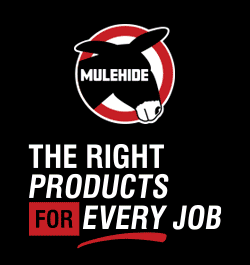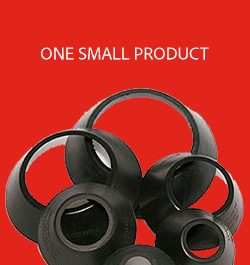Abby Feinstein's Podcast on CertainTeed Labor Study- PODCAST TRANSCRIPT

Editor's note: The following is the transcript of an interview with Abby Feinstein with CertainTeed. You can read the interview below or listen to the podcast here.
Heidi Ellsworth: Hello, this is Heidi Ellsworth with RoofersCoffeeShop and I'm here today with a Roofing Road Trips with Heidi podcasts and I am so excited to invite Abby Feinstein, the Product Manager for Commercial Roofing at CertainTeed to our podcast today. Good morning, Abby.
Abby Feinstein: Good morning, Heidi. It's nice to be here with you.
Heidi Ellsworth: I am so happy to have you talk about... We're on two separate coasts right now as you're on the East coast and I'm on the West coast talking nice and early, but we were together this last year at a couple of different trade shows and we really talked a lot about, what you've been working on with the labor study, so I really wanted to take a chance and get a road trip here on our podcast and have people hear what you've been doing. It's pretty exciting.
Abby Feinstein: Yeah, thanks. Yeah, it's nice to I guess formalize our conversation, but yeah, we've had a lot of back and forth. Happy to talk about it.
Heidi Ellsworth: Did you get...? Well, okay. Before we get started on this really progressive labor study that you've been heading up and talking and speaking on across the country, can you first of all tell us a little bit about yourself, your history in roofing and also tell us a little bit about your role at CertainTeed?
Abby Feinstein: Yeah, sure. I've actually only been at CertainTeed and officially in the roofing industry for four years. Got here in about middle of 2015 and prior to that I spent my career in solar and energy efficiency startups. So, actually out of college I spent seven years co-developing the first curved building integrated solar roofing tile. So actually I guess I sort of dabbled in roofing unintentionally for some time. But yeah, otherwise, I meet a lot of guys as we travel, guys and girls that have been in roofing for... Feels like, I think when I took the job, somebody said, it's like a vortex. Like now that I'm in roofing, I'm never going to get out of roofing.
Heidi Ellsworth: That's so true.
Abby Feinstein: And I think most people that I meet have been in the industry for 25 30 years and honestly they're still learning. So I definitely feel like as much as I know I probably scratch the surface.
Heidi Ellsworth: Well, roofing you never get out, you're 100% right on that and you are with a great company with CertainTeed and they really have been focused on trying to solve some problems for contractors, really understanding what's going on. Can you tell us a little bit about the labor study that you all did?
Abby Feinstein: Yeah, let me start with my perspective because if I'm being honest, that's kind of where it came from even though I think it got some broader life once we started digging into it. But when I took the job I was looking in industry trends and trying to dig into what was going on and it was pretty clear that at least within the bituminous or modified bitumen sector, self-adhered application, products that are self-adhered we're thriving and growing and products that were applied in... I would say more traditional methods of either mopping hot asphalt or cold adhesive or even torch. We're either growing at a much lower rate or flat, also I was getting an internal directive to kind of push our self-adhered line and I was asking, "What's going on? What's driving this?" So I was doing some reading, I was talking to folks, but internally basically I got the line that [inaudible 00:04:10] it's really fast. People, contractors like it because it goes down fast, but it gives you the same protection and I was like, "Oh well how much faster is it?" And I got, it's so much faster. I was like, "You guys don't know how fast it is, huh?" And so internally, I was like, "I'm not coming from roofing, but I, I have spent some time in both sales and marketing and in today's world, people aren't looking for slogans. They're looking for data." So I set out selfishly really to try to quantify... I think I was originally calling it labor efficiency user, in a nutshell how much time does it take to put down a self-adhered roof system versus the other types of products that we're selling. If we're going to market it that way, let's know what we're talking about. I wanted to do that with a third party. So we've worked with Trinity|ERD, which is a building envelope consulting firm, does work all over the country and so I reached out to them with the idea and they kind of beefed it up and also I would say kind of gave more context to it. So they were saying, if you look outside of the CertainTeed lens in low slope roofing, single-ply is the predominant roof covering at this time so while CertainTeed doesn't sell a single-ply, we should certainly include observing jobs that go down with those products because it's going to give it more context. And they really... From my lens wanting to just quantify numbers to make sure that I'm not marketing something without facts behind it. They were saying "We're going to learn things that, we're going to learn something [inaudible 00:06:10] the numbers and in the market today with labor the way it is, we think this is actually going to be [inaudible 00:06:17] we're not only going to be able to give folks a better sense of how to use the labor that they have from a roof system perspective, but we're going to... We don't even know what we're going to see. So we're going to walk away with all of these observations and we might land on something." So that's kind of where it started and then we signed a contract and the rest is history. They started watching roofs.
Heidi Ellsworth: I think that's so interesting cause you are so right. I've been in the industry probably a little bit longer and there has been a lot of slogans, but to have that data and the data that you're talking about, to really go in there and have something that's not just saying, "Oh yeah, it's better." But really showing, that's powerful. I mean that's really very, very cool and so tell us, I know you had 45 low slope roof installations that Trinity tracked. What were some of the top observations that came from that?
Abby Feinstein: Yeah, so there were a lot of observations that... And well, I've only been in roofing for four years so a lot of things were surprises to me. But I would say the top three takeaways. Well one, we did verify what we set out to verify. So of all of the roofing systems... Let me actually give some context too. So they did watch 45 different projects go down and among those projects we had enough national data, meaning we saw the same system go down in enough places that we ended up including, I think there's 13... I can check this real quick because I'd actually don't want to say the wrong thing. Hold on one second.
Heidi Ellsworth: No problem.
Abby Feinstein: Don't mind. There is one, two, three, four, five, six, seven, eight. There were 11 systems that we had enough data from seeing go down in multiple parts of the country that we felt we could establish a national average for those roof systems. In other words, for single-ply, it's pretty straightforward because it's just the one covering, but for multi-ply modified bitumen, you got to have... There's at least two layers there, right? That's makes it multi-ply. So to have a mechanically attached to the sheet and let's say a torch cap sheet. We wanted to see that system go down in multiple places to establish regional numbers and then a national average. So of those 45 jobs mixed in there, we're seeing 11 different roof systems go down and then we charted them out in the studies. But... Sorry, I'm kind of rambling a little bit here. But it's helpful though I think to understand how the data was acquired so that when I'm talking about the observations, they're not the kind of questions going on like, "How'd they get that number and what does that really mean?" So what we did with the study, so they went out and what they were observing was they were documenting the task level number. Man minutes or man hours, labor hours per task. So per task and per roof system. So let's say you had a 10 foot wide mechanically attached sheet of TPO or PVC, they were documenting on a spreadsheet, the regional time which became a national average for the number of labor minutes to put that sheet down in the field. They also separately documented the labor minutes to complete a drain, the labor minute to complete a base flashing and then we did that for the most common roof systems that Trinity sees going across the country. So a spread of modified bitumen, multi-ply systems as well as both TPO and PVC on the single-ply side. We did that and so then if you can picture this, we amassed a spreadsheet of here's the roof systems on the left side and then a running across the top right-hand side. You'd have the different tasks that are involved in putting down a roof system and then you've got all these numbers in the middle. So while that was academically interesting. You can't really digest that or really walk away with an easy way to compare one to another or turn that into like an aha moment. So what we did was we kind of applied the task level information to a sample project. So we created a situation, if this makes sense, where if we could have had a single roof and one crew go up on that roof and put down a roof system and tear it off and then go up with a different roof system and put it down and tear it off and then go with a different system and so on and so forth so that you were really comparing apples to apples. That's what we essentially did with the sample project. So we created a 500 square project with X amount of drains and X amount of pipes and so many lineal feet of base flashing and we applied the data that we observed to that project and then that's what's charted in the actual study so that you could compare one system to the next. Does that make sense?
Heidi Ellsworth: That makes total sense and very complete, really looking at how to make sure that it was fair across the board for all the different products that you had basically a base sample and then looking at other things. Is that right?
Abby Feinstein: Yeah. And beyond that we spent a lot of time talking about what would make this unfair. So in the real world, there's a lot of quote on quote noise in the data. So the roofs are at different heights, they're at different climates, crews have different experience levels, projects are... Could be detail heavy or detail light. They could be over different substrates and all of that could potentially impact the labor efficiencies or the time required to put down the roof. So within the study, I'm not going to list it now because it would take the entire conversation, but there's probably about two pages of bullet points of factors that we considered that we either didn't time because they would have like chunked up the data or we would... Didn't observe that project. So all of the projects that are even timed included in the study were of a similar height, a crew of a similar experience level, a roof of a similar size if you get where I'm going in this, they were all of a steel deck with insulation. So everything was... We tried to even the playing fields as much as possible to eliminate the possibility of saying, "Well that would have gone down faster if."
Heidi Ellsworth: Right and the nice thing is you do have a full report out. It's actually available on RoofersCoffeeShop. I know they can get it from CertainTeed with all of those... How that worked with everything that you did. So it's all there that people can read and kind of understand. "Okay, it was fair, they did make it work." And you're right and why we started there because that's really... If you don't understand kind of how the study and then it was fair, then people are just going to be like, "Oh they just made it to fit what they thought." Whereas no, you are actually looking like how do we make sure it's not unfair? I like it how you said, you came at it from a couple of angles.
Abby Feinstein: Well thank you. Yeah, and to reinforce also, this was not a brand study so we did not just look at... It had nothing to do with CertainTeed. It was a roofing type study. So we looked at... Trinity is not associated with CertainTeed in terms of... They're not like a sub-company or whatever. So the jobs that they were on were from all different manufacturers.
Heidi Ellsworth: That's great. I've actually worked... I worked with Trinity in my past life. So I know they are a great, amazing group and great people to actually put this study together.
Abby Feinstein: So I'd say there were three predominant takeaways from the study. The first is that we did verify what we set out to learn. The two-ply self-adhered modified system was the fastest to go down as compared to the other systems. So, that was good. It was good to hear that we hadn't been marketing a fairy tale, but then I would say there's a big but here where... I wouldn't say this was necessarily the biggest surprise, but certainly I would say the next two things were equally as large for the takeaways and this is kind of hearkening back to the fact that Trinity raised the fact that we're going to learn things that we don't... We don't know what we don't know yet. So one of the other takeaways... Two of three if you will, were that tools mattered a lot. So both of these, I think next two things that I'll say were kind of things where if you're a contractor you would probably say, "Yeah, I kind of know that." In the same way that telling somebody that they should wear a seatbelt cause it's safe. I think people are just like, "Yeah, yeah, it's the right thing to do. But like how much impact does it really make if I get in a car crash?" Well, it makes a lot. So in that vein, what was observed was that the tools that people were using, if they were not well maintained... Drill bits work dull, batteries weren't charged, that kind of thing. Equipment maybe wasn't properly tuned up, things were breaking down. If you didn't have a... This kind of leads into the project management side of things, which is the next step. But if you didn't have proper power for some of the robotic welders that are used in TPO, things like that. Labor efficiencies broke down a lot and it was almost product irrelevant. Like you could choose... There could be baked in labor efficiency to any one product, in other words, it has the potential of going down fast, but if the tools that are to be used to put that product down are in a subpar state, it really impacts how quickly that can go down. Do you know what I'm saying?
Heidi Ellsworth: Yes and that makes sense because that I think every contractor out there... I agree with you is nodding right now as they're listening. Going, "Yeah, of course. If our tools aren't in prime condition, if we haven't taken care of getting everything ready and making sure it's in place where it needs to be in order to be very productive on the rooftop, you are going to have lost labor time."
Abby Feinstein: Yes. So I think that are nodding, but also perhaps maybe they don't give it enough attention when they're preparing for a job the next day. I would say that Trinity was even surprised at the numbers of downtime, which ultimately we didn't factor into any of the product timing. Like if a crew was stopped because their tools went down, we paused the time clock, if you will. But we still noted that as an observation and it was a big takeaway that like men... They may be paying attention to this or they may recognize that it's important, but the amount of time that we saw a lost four tool issues was big and also time saving potential. Another example on the tool tip was the idea of when you're doing a torch job, there was significant time savings for a dragon wagon or a multi-car torch, a multi-car wagon. Multi-torch wagon versus using a handheld torch, which I think also yeah people would say, "Yeah, that should go down faster." But it was measurably faster.
Heidi Ellsworth: Wow. So really [crosstalk 00:19:57] getting the tools and the technology.
Abby Feinstein: Yes, very important.
Heidi Ellsworth: Yeah.
Abby Feinstein: And so then the third on a similar kind of the other side of that coin was the project management side. Also, no matter what product you are using, we saw that if you had an untrained crew or an ineffective foreman or crew that was not communicating well and sometimes that was a language barrier, but sometimes there was just people not communicating. Like, I actually love to tell my personal story on this. I was once setting up for roofing training, a hands-on training and we were building up these decks that the roofers that were coming were going to use and me and my coworker picked up a piece of plywood and then we walked it over to where we were going and then I said one, two, and then he dropped the plywood and I was like left there holding the thing, which kind of got yanked out of my hands and my shoulders hurt and I was like, "What the heck man?" And he was like, "I drop on two." And I was like, "That's not a thing." So like that level of communication was what they saw on the roof sometimes. Just one guy going one way and another guy going another way and it would just screw things up cause us having to do drop backs and repairs. So I would say that was the third major takeaway that if I was to summarize: number one, yes there is a difference pragmatically, academically and how fast one product can go down over another. But number two, if you're not using the right tool or you've got subpar tools, it's going to impact your potential and if you don't have crews that are working well together that are trained, optimizing their productive time. Both of those things are going to dramatically impact whatever products you're putting down.
Heidi Ellsworth: That is such common sense, that it's really something I think everyone forgets and Abby, I think it's really interesting because just think about the initiatives that are going on right now with the National Roofing Contractors Association and NRCA around training and that's really exactly what you're talking about here is that full training of really understanding productivity on the roof.
Abby Feinstein: Yes. Yep. These are check boxes that no matter how good you get and if you've spent that 25 30 years in the industry, you are not too good for being prepared. So it's never going to change how fast you can put down something. If your tools fail you or your guys aren't working well together. Yeah, it was a huge observation.
Heidi Ellsworth: So those are the... Do you say probably the two of the biggest, maybe not surprises, but observations from the study? Were there any surprises?
Abby Feinstein: Yeah. For me there were, and I can't say that... I have to say I can't speak for what would surprise a contractor reading this. We've obviously spoken to a lot of contractors and I can talk about their thoughts, but for me, the two biggest surprises that I had: number one was frankly how slow the hot mopped asphalt of modified was. So there was 66... It took 66% more time to put down a two-ply modified bitumen system in hot asphalt than it did to put down a two-ply system using just pressure sensitive sheets that are self-adhered and for me why that was big like, "wow." Is that okay when you look at specifications today by and large still the most popular way to see a modified roof, a two-ply roof specified is in hot asphalt and you're seeing trends that are contracting that sector, that product segment. So I don't think anybody would argue be it an architect or a contractor that, that's a great roof. What you're hearing in the market is that they can't compete and to me when you look at if what's being specified is hot asphalt, then that's why it can't compete. No doubt. By the time you layer in material prices and then you look at how slow those products were to install those products put down a fantastic roof but they are not going to be installed cost competitive with that PVC roof. They're just not. So if that is the way the community and the industry thinks about modified in two-ply systems and they're not really yet kind of accepting or paying attention to the newer technology, I mean self-adhered, been out for 20 years at this point. But if they're still kind of overlooking that and one-to-one is hot asphalt equals modified, that would be dropping the perception that modified can compete. So I think that was the big surprise for me and how slow it was and also kind of starting to connect those dots in terms of industry trends.
Heidi Ellsworth: That's really interesting too because I think so many of us kind of think, "Oh asphalt's not even a thing anymore, build up is just, it really has gone to more self-adhered, the newer technologies to modified bitumen and how is in torch and how it's being applied." But that's not the case across the board especially when you're looking at, "Okay, are we across, are we..." It kind of affects your communication comment. Are we communicating across the entire industry from specifiers, architects, engineers, consultants, contractors? And what's really best for that end user.
Abby Feinstein: Yes. Right, exactly. And then I would say one other surprise for me was the time it took to install a single-ply and I just heard. White and cheap, at least especially with TPO and I hear when I read and when I talk to contractors, what's the growth of single-ply roofing is speed, speed and labor, it's fast to go down and I just wonder. I look at our numbers and whether you were looking at... Now to be fair, we don't have any six foot rolls. So maybe the six foot rolls would have gone down faster. But across the board, the 10 foot roll, whether they are mechanically attached or fully adhered, when it came down to labor minutes per square or per task, it wasn't incredibly fast. It was actually closer to the hot asphalt. I mean, it wasn't that slow, but it was not incredibly fast and I wonder if these jobs, the perception are that the jobs are going down fast, but perhaps people aren't taking note to how many crew members are on these jobs that even when you take perhaps a job that went down fast by the time you divide that across the number of people that it took to put that job down that fast, the labor time is still high because that's kind of how the study works is it's in labor hours per system. Whereas like a self-adhered two-ply system, you can put that down very fast with a crew of three. So the labor hours are incredibly low. So, and then we actually took the numbers that we observed and just as a gut check or some sort of level of validation, we cross check that with RSMeans, which is a national well-respected estimating how fast [inaudible 00:28:25] and our numbers were pretty in line with RS means. We didn't have any national averages that were higher than what RSMeans has for any of the systems we're within 7% so as much as we thought this was kind of aha groundbreaking data, this was all right in line with what RSMeans is recommending people use for labor estimates. So the time it took to install single-ply was a surprise for me.
Heidi Ellsworth: Wow. That is cool. What are you hearing from the contractors? I mean, I know you said you've been talking to contractors out there about this study. What's the feedback?
Abby Feinstein: By no means is my feedback statistical cause I just don't talk to enough contractors unfortunately. But I would say it's a mix bag. We've got contractors that certainly... And I would say more of the folks that I've seen at some of the speaking engagements that I've given where they're... Perhaps it's kind of easier to digest this when somebody is presenting it to you. But those folks have come up to me after and communicated that they found it very helpful and I think they get the study for what it was intended to do. This was intended be directional. It was supposed to kind of open a contractor's eyes to say, "There are some differences in labor times and there may be advantages for one thing or another." But like we talked about, "But you've got to consider the tools, but you got to consider your crew communication." And so it was like, "This is what we observed, but here are the factors that have significant weight and driving those results." Whereas I think some contractors misinterpret this as to potentially being like, "Here's what you should use for your estimating numbers." And that was not the intention of the study. So I've definitely ran into contractors. I actually sat next to one on a plane, was a very long plane ride where he was getting the fact that he did not believe the study and by the time we landed, I actually think he was okay because I said, "Well, it was a study. It was what was observed. So I don't really know how to take the fact that you don't believe it." But what I heard, what I learned is that really what he was trying to say is that, "Those aren't my numbers." Like the numbers that I see are not the numbers that my crews are experiencing and I said, "That's okay." Like these aren't one-to-one numbers and in fact that's a great takeaway. Three crews are going to be different and we tried to... Every project is different, every crew is different and so you can't take this study at face value and say, "Okay, we should be using self-adhered for every job going forward because look how fast it is." That is not the punchline here.
Heidi Ellsworth: Yes, and these are the types of studies that we need to help them, cause sometimes the study is just going to show you what you already know. You need to have your tools, right. You need to have your crews right and then when you kind of take all of that, then you can start going into the systems like you have and so that it is directional for the contractors and sometimes it's hard to make those changes. It makes a lot of sense with the contractors, with the feedback and also trying to constantly educate. I mean that's our job for each other across the industry. Abby, what are some of the top advice you would have for contractors when it comes to the labor shortage and really kind of getting in front of that with their companies?
Abby Feinstein: So let me start with labor shortage aside and then I do have one that's specific with that backdrop. Labor shortage aside, my biggest advice after these observations is that there is not one system that's going to work for every roof and I've been in conversations several times now where a contractor will push back on Trinity who is a third party here and say, "Well, what roof do you specify?" And the answer is it depends. There is not... It's one thing as a contractor to have a ThrowDown system. I hear guys talk about it all the time. Like, "This is the system that we love." But you have to recognize that that system may not be right for every system and so you have to recognize the type of building and the climate that it's going in and the roof owner desires, client desires for what they're looking for in terms of warranty and protection. From a labor perspective, you have to acknowledge the type of substrate and the level of details on the roof and all of those things are going to impact and should be providing you cues as to what roof systems you should be considering for the job. So I would say that's the biggest takeaway or I would say that's my biggest piece of advice, kind of labor shortage aside. But the other piece, which definitely bides into that one is that you have to know your numbers, your numbers, not the numbers that are in this study, not the numbers that RSMeans is suggesting. You need to know how efficient your guys are at putting down various roof systems that you keep in your wheelhouse. So I'm not saying you need to know how to install every single type of roof out there and that those are all of the options that have to be considered on every roof, but you have to have a couple of different options that you can choose from because roof systems are going to be right or not right for various projects and then in order for you to turn a profit you need to be realistic on how long it's going to take you to put that system down, both turn a profit and win the job. We see a lot of folks that, we'll quote for example, a self-adhered job and those quotes are just wrong. I mean we run self-adhered trainings. We've got this study here that has some numbers quantified. Some people are overestimating and underestimating and we saw it within the study as well. Some of the contractors allowed us to... It was pretty cool. They allowed us to look at what their estimates were for the roof that we just timed and we were able to see where they were on and where they were off and one of the predominant things that we saw was over, excuse me, underestimation of the time to complete a drain. So, when I say know your numbers... You want to be competitive to win that job, but you also want to accurate numbers to make sure you're turning a profit and you may have the most efficient crew on the block or maybe you need to be a little realistic that you've got a couple of new guys on this job and you can't bit it like you bid the last one where you had your eight crew. So knowing your numbers and constantly measuring is important. We saw very few contractors that measured their actuals from job to job and kind of kept a database if you will, where they had their own labor efficiency by roof system and while that might be a little heavy handed, something along those lines is probably important to keep your business as profitable as possible.
Heidi Ellsworth: That makes so much sense and I agree with you, I think that's going to become even more critical as we move forward on working through the shortage on labor out there and just the competition, the ever changing economy. That is probably some of the best advice you could ever give and tell us a little bit about what at CertainTeed, what are you guys on? What's your kind of next step on this? You said this is such a directional helpful study, that there's so much more to do. What are you guys thinking about?
Abby Feinstein: Well, I mean from a product side we're continuing to work on things that are quicker, go down with less skills faster. I would say the bigger focus actually from a labor shortage perspective is to continue to invest in our hands on training. We are very proud of the experience that we can offer to a contractor. We've been running... Started running hands on training out of our Little Rock plant in Little Rock, Arkansas and then we also have now for the last couple years been offering roadshows, if you will, where we will work with distributors or contractor outfits to come into your locale and when we do it local, it's about a half day training and down in Little Rock we offer about a day and a half and what we hear, unsolicited feedback I would say from contractors is that a lot of the quote on quote schools that's some of our competitors offer is quite a bit of classroom time as in terms of percentages. A lot of time spent on sales techniques and I guess I'd say like propaganda like why you should buy these products. And then towards the end of the day they get to line up in a line and then stand there and work with the product for a couple of minutes. Whereas we are really focused on a hands-on program more of when the contractors leave, they have a confidence and skill to put down the product correctly, quickly and in a way that is going to allow us to stand behind the warranty and so 85% of the time spent in our training is actual hands-on time with the product, building up a roof system. So I would say our focus is to continue invest in that program, not necessarily to change the program, but just to be able to offer more of it because we're getting a lot of great reviews from the guys that have come through.
Heidi Ellsworth: I love that you're actually... You're walking the talk, right? You're telling them that they need training, that they need to be focused on that and now you're taking the time to actually get out there and provide that for the contractors. So I love that follow through. I think that's exactly what needs to be happening out there in our industry. Everybody helping each other to see success.
Abby Feinstein: Yeah, we learn too. We get a mixed group of contractors and the fun thing too is there's a way not to do it, but there's several ways to do it. So it's pretty cool experience because we get contractors from all over that aren't really competing with each other. We've got a couple of guys from Kansas and a couple of guys from California and a couple of guys from Colorado and they're happy to share best practices and we're manufacturer so we're kind of setting this setting the stage here, but we're not going to say that we necessarily know the fastest way. So it's pretty cool. We've definitely learned over the years from some of the contractors that we're training on tips and tricks that we can do and we then incorporate that into things that will teach contractors going forward. So it's a real cool program. I will say to those listening, if you haven't gone through a hands-on training with CertainTeed on the commercial side, [inaudible 00:40:37] to contract, contact your local TM and try to get that stuff. It's great. Great opportunities Bruce.
Heidi Ellsworth: And now's a great time to do it too, get some training and during the winter downtime, speaking of which IRE is right around the corner, any fun plans, anything that we can kind of tease the audience with about what's coming up in Dallas in February?
Abby Feinstein: Yeah, we're getting ready to highlight some of our two-ply 25 years systems, we call them our two-ply 25. So they are labor efficient systems that we offer 25 year warranties with only two layers. So if you're unaware of the kind of broader context, most of the competitors that we see to get that level of warranty is at least three layers of a multi-ply system and we're offering it too, and we offer it both in a fully self-adhered system. So very quick and low skill to put down and we also offer it in a hybrid system, which is a self-adhered base and a torch applied cap. We'll be showing off those systems and talking about them. They're also some of the things that you would get your hands on within the training and then over this past year we launched SmartFlash ONE, which is a liquid applied flashing also goes down very fast and gives you a very robust waterproofing for interruptions in the roof field, which can be otherwise challenging to do and [inaudible 00:42:18] for 20 years without having to go back and kind of refill it like you would for let's say for a pipe with pitch pans and so forth. This is a one and done kind of deal outside of what you would normally do for good wear and tear maintenance on a roof. So we're showing both of those systems really with labor shortages backdrop. So CertainTeed focuses on roof systems and products that deliver long rooftop performance, excellent asset protection. So we're really not the guy that's trying to roof the warehouse that's got nothing in it. We're really... Our product portfolio is more towards folks that care about what's underneath the roof and so we're trying to maintain that performance, but also responding to labor shortage and having products and systems that do that. So we'll definitely be showcasing those at IRE.
Heidi Ellsworth: That's great. Abby, I have to tell you, I've learned a lot this morning. Thank you so much for your time, for your diligence in getting the data and really looking at this and finding solutions for roofing contractors to like you said, "Provide the types of roofs that are going to protect." That is great. Thank you so much for being here this morning.
Abby Feinstein: Thanks for having me Heidi. Let's see you in Dallas.
Heidi Ellsworth: Yes, I will see you in Dallas and for all of you listening, please go to RoofersCoffeeShop. First of all, you can hear this podcast on demand on the RLW read, listen, watch section of our website, under podcasts and this is on demand all the time. Also, you can find on the site information about CertainTeed and their directory. You can do the download of the study so that you can hear, see, read more about it, and also ask any questions or get further information. So please check us out and thank you again for listening to this podcast. Have a great day.
Recommended For You

Rick Rominger - Increasing productivity through performance products - PODCAST TRANSCRIPTION
Read More ...
Brandon Strawder - Staying Safe and Making Money in the Off Season - PODCAST TRANSCRIPT
Read More ...
Heidi and Vickie Show- 12 Questions PODCAST TRANSCRIPTION
Read More ...

















Comments
Leave a Reply
Have an account? Login to leave a comment!
Sign In